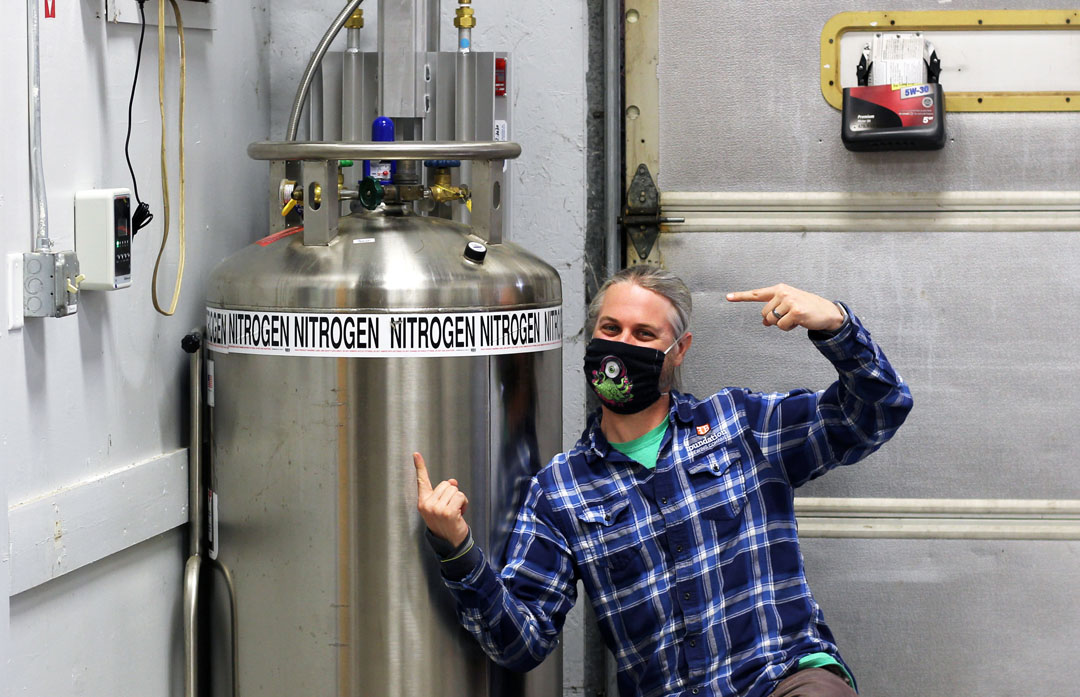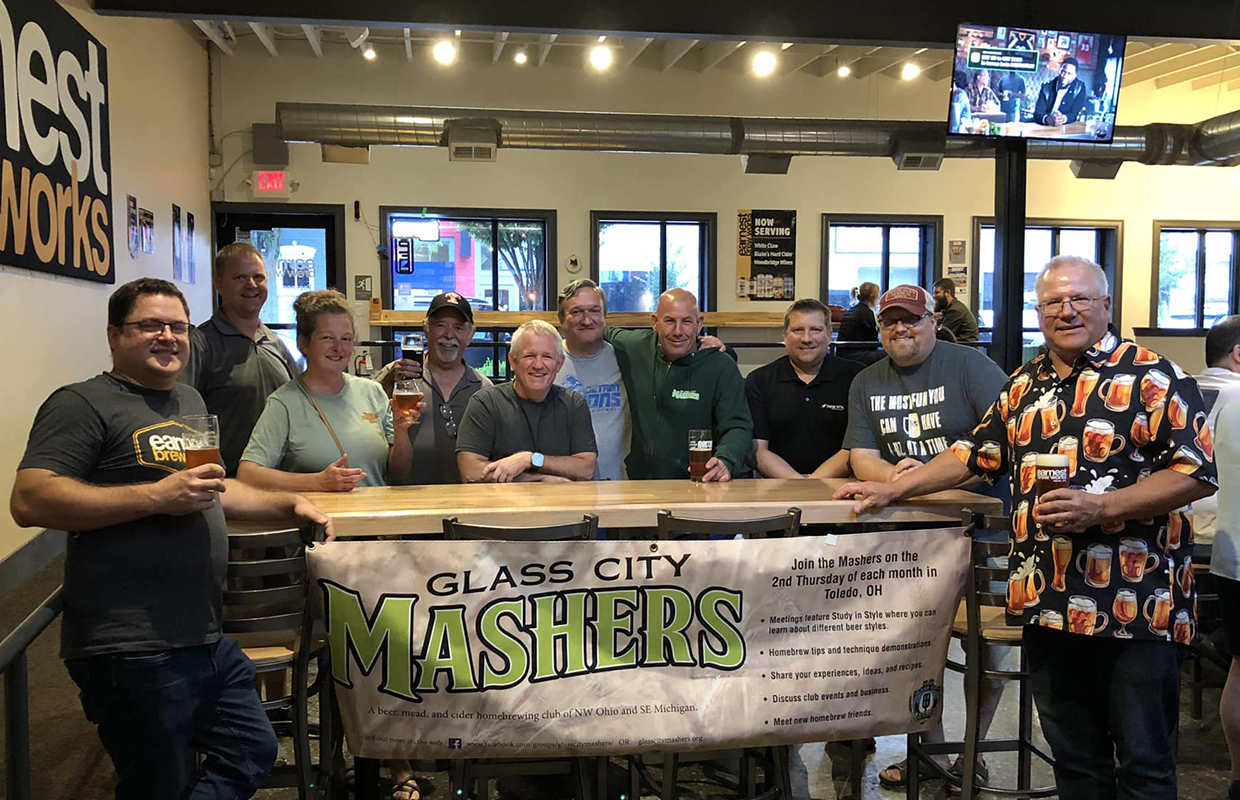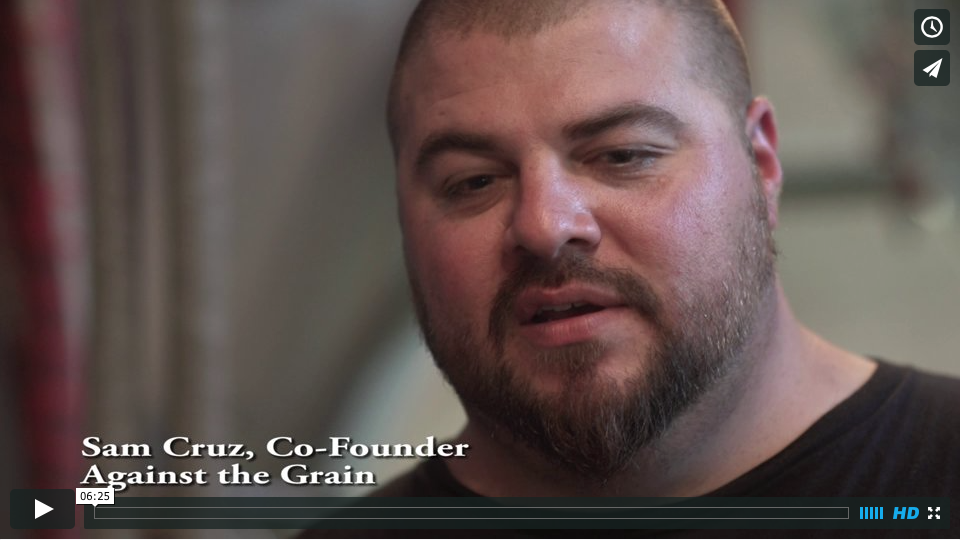
Better for the environment and easier on the pocketbook, using nitro in more than just a Stout is a thing that Foundation Brewing is championing heading into 2022.
The Portland, Maine brewery added nitro to the brewhouse as well to help use less carbon dioxide in day-to-day operations, and it’s paying off in many aspects without losing any quality to the beer.
Co-founder and head brewer Joel Mahaffey took time to share with Brewer how the brewery has made the switch and the benefits that they have seen even over the past six months.
“I’ve tried to tell everybody that will listen to me about it because I think there are so many reasons to bring nitrogen into our plants,” he said.
First, the places Foundation has switched from CO2 usage to using nitro in its place:
- Pushing beer from the fermenter to a brite tank: “We used to pressurize our entire fermentation vessel at 15 psi with CO2 only to blow it all down immediately after the transfer was over to clean the tank. So that was a pretty big waste,” Mahaffey said, “but there was really no alternative. You needed something inert. So we’re using nitro for that now. So that was awesome.”
- Pushing beer from brites to packaging: “I was concerned that this wouldn’t work but I talked to a few people and they assured me that it would,” he said. “As long as the beer is cold and it’s not sitting for an extended period of time with an imbalance of nitrogen in the headspace, you don’t lose any carbonation of your beer.”
- Cleaning and purging tanks and kegs: “When we used to purge our brite tanks, we would run the CO2 into the bottom of the tank, and the CO2 would form this heavy layer on the bottom of the tank and then we would vent out the top of the tank to allow those lighter gasses to escape,” he explained. “When we do that with nitrogen you do it the reverse. So we’re pushing into the top of the tank and venting out the bottom of the tank.”
Foundation also uses nitro to purge the headspace during dry-hopping or fruiting tanks.
So where does Foundation still use CO2?
For finishing up carbing kegs and packaging along with purging cans on fill day. Using spunding valves helps the brewery reach around 1.9-2.0 volumes. That has also helped in less CO2 usage as they only have to get the volume up to 2.5 instead of pushing uncarbonated wort.
In the time since implementing new equipment like Ts into its gas lines to switch between co2 and nitro tanks, Foundation has used about half as much CO2 as it usually used in a month. Coupled with about an 80% difference in cost per liter of CO2 to nitro, the savings have been immense and worth the cost alone. But with a CO2 supplier not being localized and having to be trucked from farther away along with the way CO2 is created helps the Maine brewery feel better about lessening the usage.
READ MORE: These Maintenance Checks Could Save Money, Downtime in Brewhouse
Mahaffey said it can be daunting to look at your utilities by bringing on a second gas and running separate lines and having to keep track of something different.
“It’s an easy thing to gloss over,” he said. “Once I tried getting a little more motivation to dig into it, I was really blown away by how simple it was. And in the way we installed it.
“We ran into all of our drop points with Ts so that we could switch back and forth at any point. If we discovered that nitrogen just wasn’t working, we could go back to CO2.”
The other thing that’s been really nice, he added, is that if they run out of nitrogen they can switch over to CO2 and use it for a day until the brewery gets a nitrogen delivery.
“This has saved us money, but it also means we are using less carbon dioxide which is part of our company sustainability ethos,” said Business Manager Tina Bonney. “We are also currently in a force majeure situation with our CO2 supplier and have experienced some restricted supply earlier this year.
“The nitrogen also helps us when the supplier lowers how much CO2 they will deliver each month.”
Fear of the unknown was the biggest leap of faith, Mahaffey said. But, he’s glad the brewery has done it.
“The only way to figure it out was to try,” he said. “The science behind everything is there.”




Be the first to comment